Installations
How to keep weeds out of flower beds forever
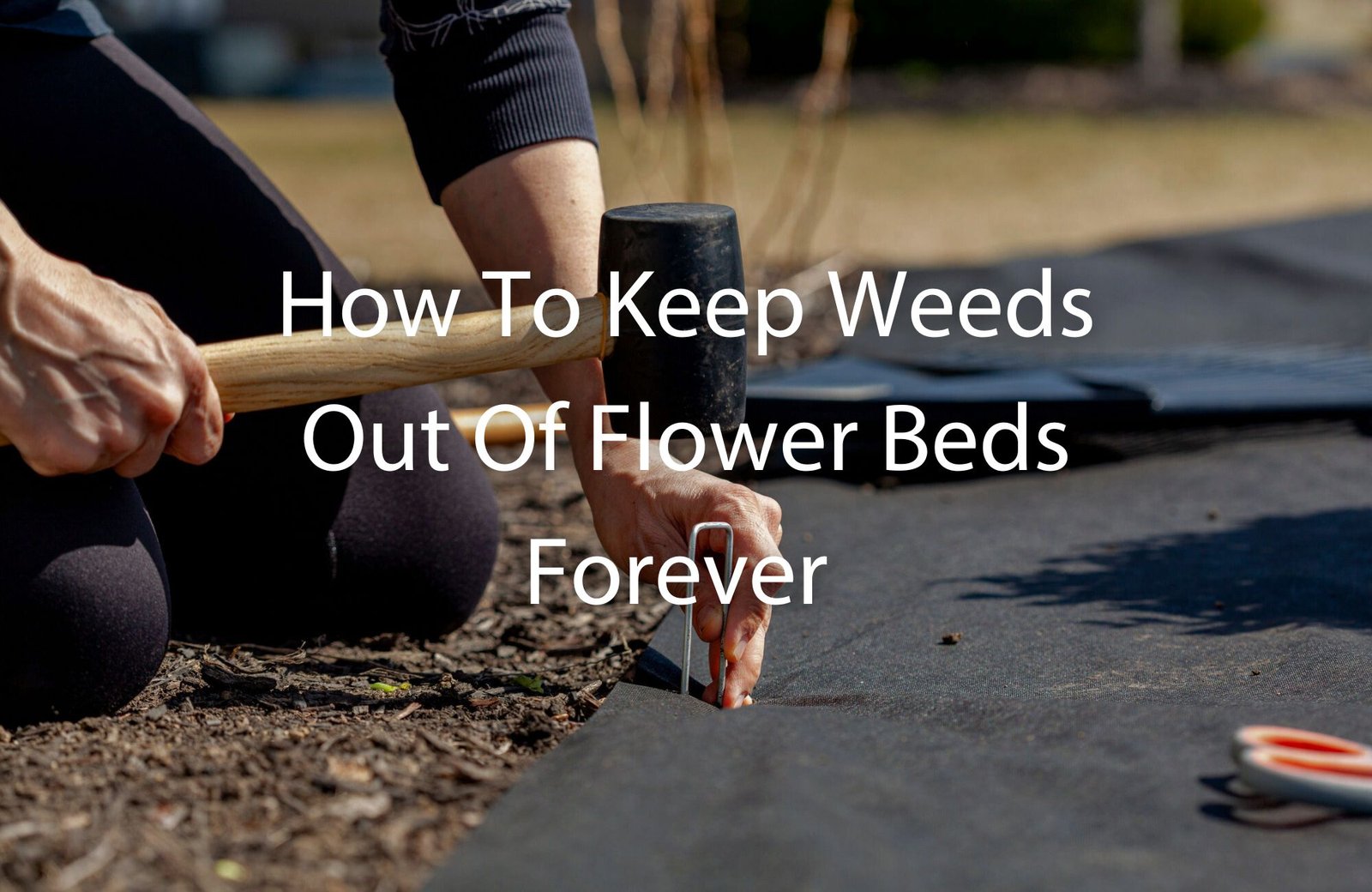

Are you constantly battling the weed invasion in your flower beds? Or perhaps you’re planning to create a new flower garden and are looking for the best flower bed weed barrier? Well, you’re in the right place.
In this blog, we’ll share tips and tricks to help you keep those pesky interlopers at bay, whether you’re starting fresh or wrestling with an already weed-riddled flower bed. Get ready to wage a successful war against weeds and enjoy the beauty of a pristine, blooming garden.
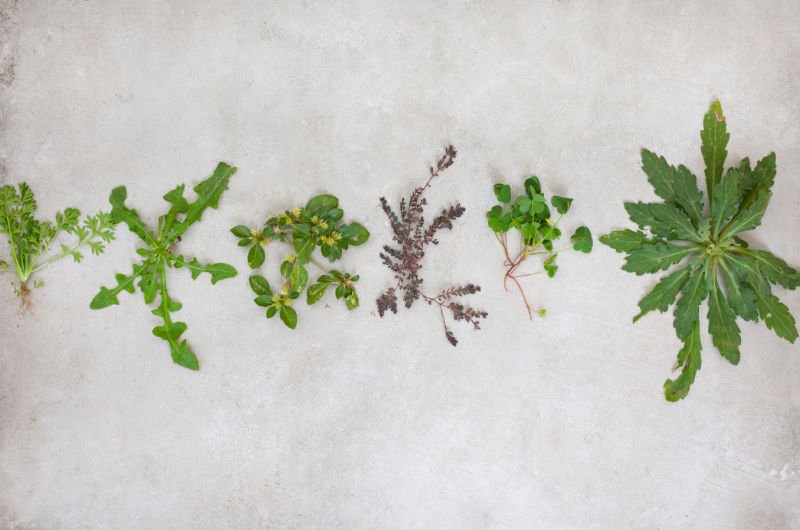
Weeds – the party crashers of the plant world, always showing up where they’re least wanted. And just like those unwelcome guests, they can come in all shapes and sizes, from tiny, elusive sprouts to those giant, hard-to-miss dandelions.
Here’s the rub – these invaders don’t just disrupt your flower bed’s beauty parade; they’re actually stealing the show. How so?
Weeds guzzle up nutrients, sunlight, and water meant for your flowers. They’re also experts at crowding out your precious blooms, denying them the space they need to grow.
Oh, and let’s not forget – some of these crafty weeds can harbor pests and diseases. Talk about a triple whammy!
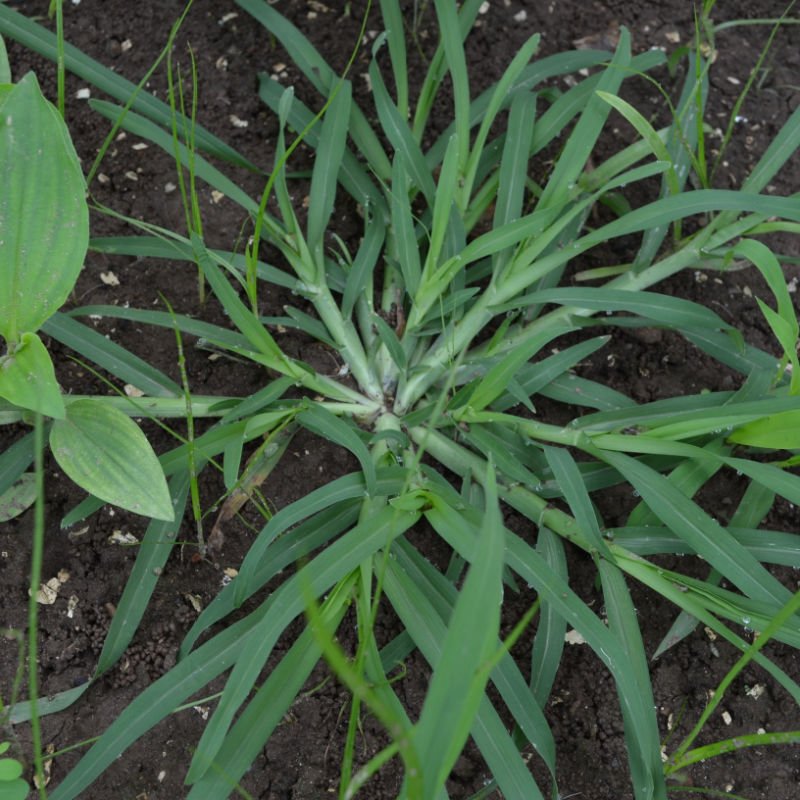
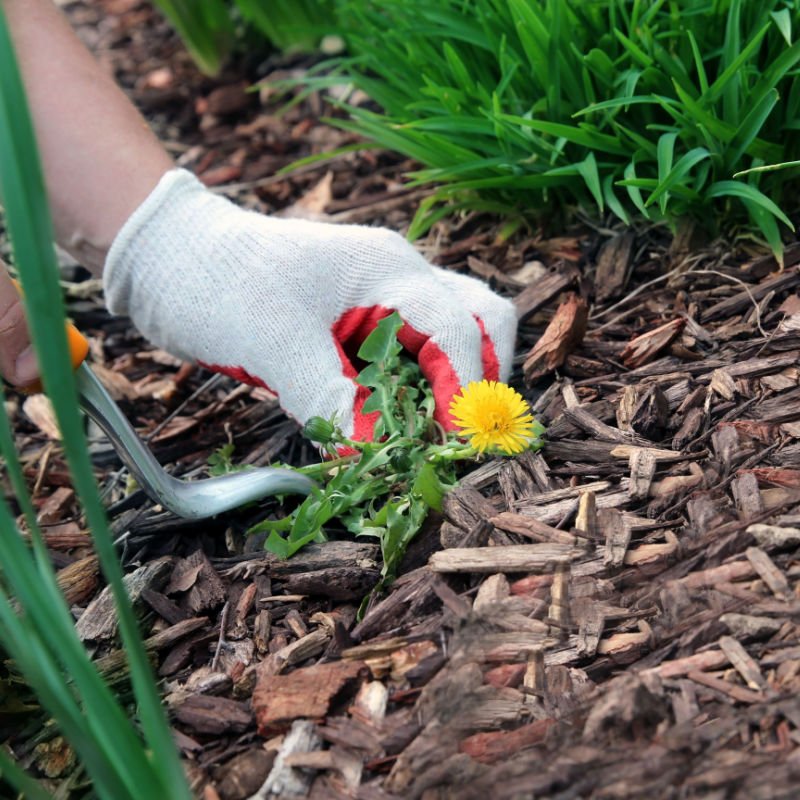
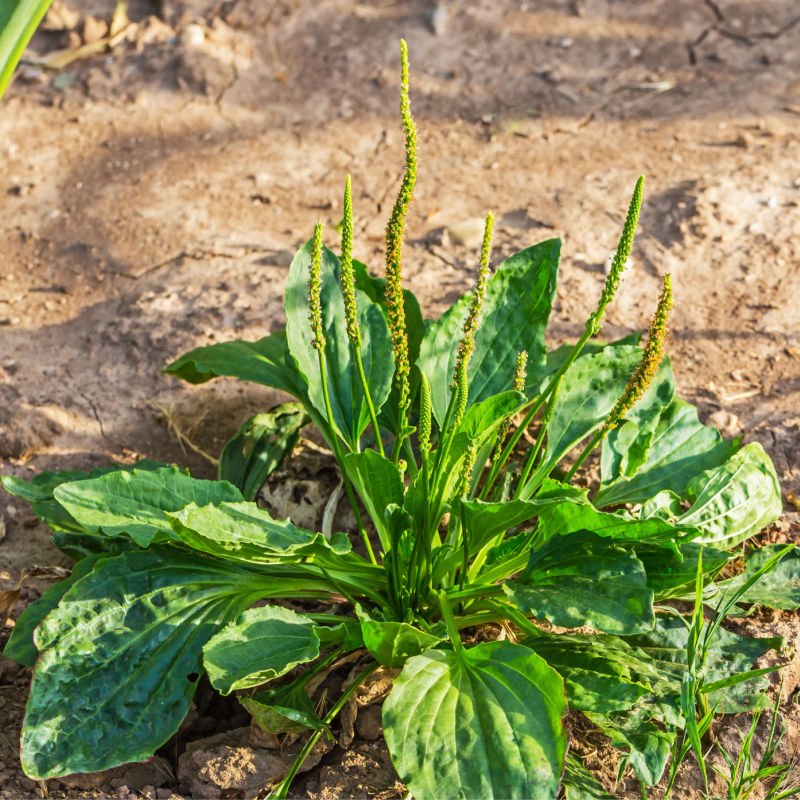
Now, we can’t launch our counter-attack without knowing our enemy, right? So, let’s get to know these sneaky invaders that love to mingle with our flowers.
First off, meet dandelions, those charming little yellow rascals that turn into puffballs. Cute, huh? Not so much when they’re crowding out your beautiful and friendly groundcover plants.
Then there’s the crabgrass – the green monster that sprawls all over your flower bed like it owns the place.
And let’s not forget about bindweed, with its pretty little white flowers, not to be confused with the many beautiful white flowering plants out there. Don’t let that innocent look fool you; this plant’s a master at the game of thrones in your garden, climbing over everyone else.
Knowing your weeds will help you figure out the best way to evict them, while keeping your flower beds blooming and beautiful. Now we’re going to arm you with some powerful tools to keep these gate-crashers away!
Before anything else, let’s start from the ground up – literally! A good soil base is the bread and butter of healthy flowerbeds. By enriching your soil with quality compost, you’re not just helping your new plants roots to spread; you’re also making it harder for weed seeds to settle in and germinate.
Crowd control, anyone? By spacing your plants properly, you give your flowers room to stretch and grow, but not the weeds. You want to plant your flowers close enough that they eventually fill out your flowerbed. Just not so close they start getting into fights over nutrients and space.
Gardening isn’t a one-and-done deal; it’s like a good friendship. You’ve got to keep showing up. Regular maintenance is key – a quick check here, a little prune there. But if you hate weeding chores and just want a weed free flowerbeds forever, keep reading.

Sometimes, the best tools are right at the end of your arms. Yup, your hands! Hand pulling to remove weeds might seem old-school, but it’s effective. Got wide open spaces with a lot more weeds? Grab a hoe and start raking.
But remember, timing is everything. Attack those small weeds when they sprout and the soil is moist. Removing weeds early is less of a chore and stops more weed seeds from spreading.
Did you know that household items like vinegar or boiling water can be your secret weed-fighting weapons? They’re perfect for spot treating those stubborn, hard-to-reach weeds in flower beds. But remember, they’re not picky; they’ll harm your flowers too, so aim carefully!
Ever heard of weed-eating insects and microorganisms? No, it’s not sci-fi, it’s biocontrol! Introducing these natural weed predators can help keep your weed situation under control. It’s like having your very own weed-fighting army.
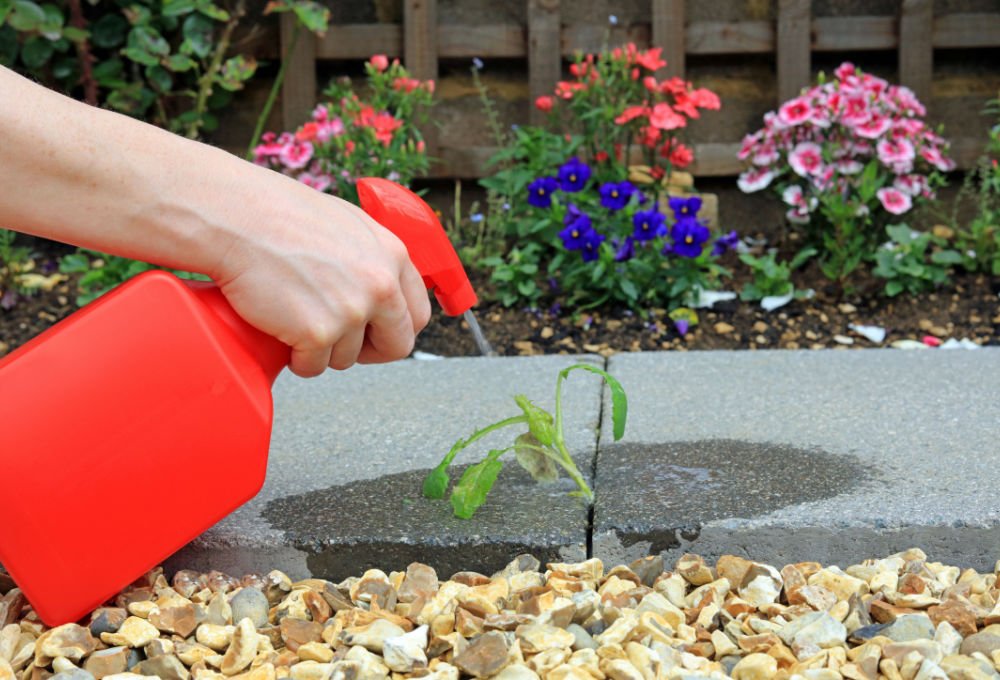
Sometimes the situation calls for bringing out the big guns. Chemical weed killer can be a lifesaver when you’re dealing with a major weed infestation. But remember, it’s a double-edged sword. Herbicides can stop weeds but also harm beneficial soil organisms and can be hazardous if not used properly.
When using chemical weed killer, always, and I mean ALWAYS, follow the instructions. Go for eco-friendly weed killer whenever possible. You get to kick out unwanted plants while still giving mother nature a friendly nod.
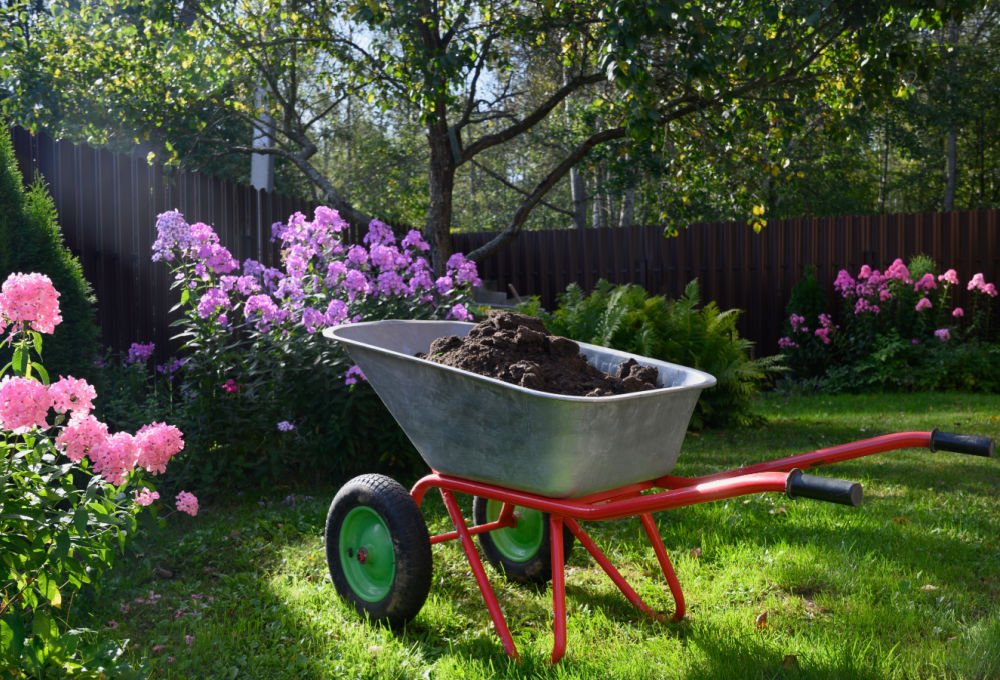
Mulching is a mighty tool in your gardening kit, so let’s get to the root of the matter and find the best mulch barrier for your flower bed.
Organic mulches are nature’s gift to gardeners. Comprised of natural materials like wood chips, straw, grass clippings, and compost, they add nutrients back into the soil as they decompose, improving soil fertility and structure over time.
Wood chips and bark mulch are a popular choice for flowerbeds. They look great and are durable. Also, as they break down slowly and provide an effective weed barrier.
Straw and grass clippings decompose faster, providing a quick nutrient boost to your soil. However, they might need replacing more often.
On the other side of the fence, we have inorganic mulches like gravel, pebbles, or even recycled rubber. While they don’t offer the nutrient benefits of their organic siblings, they’re champions when it comes to longevity.
Gravel and pebbles add a clean, crisp look to your flowerbeds and do a stellar job at blocking weed growth. However, they can absorb and radiate heat, which might not be ideal for the delicate blooms on your annuals.
Rubber mulch, made from recycled tires, is also an option if you’re after a long-lasting, low-maintenance solution.
And then there’s living mulch – low growing plants and ground covers that spread across your flowerbed, providing a living barrier against weeds. Ground covers like creeping thyme or sweet woodruff not only fend off weeds but also contribute to the overall beauty of your garden. Win-win!

Don’t be enticed by the cardboard garden hack that promises weed-free, fertile soil through sheet mulching, aka cardboard and mulch.
The concept involves layering cardboard over your garden bed, topping it with compost or mulch, and letting nature take its course. The idea is to suppress weeds and enrich the soil as the cardboard decomposes.
Here’s the catch – decomposition is a slow process. It can take months for the thick layer of cardboard to break down. During this time, the soil underneath can become compacted and deprived of oxygen. This is a big no-no for your delicate blooms which need airy, loose soil to thrive.
Contrary to the promise of nutrient-rich soil, the cardboard decomposition process can actually rob your soil of essential nutrients, particularly nitrogen. The microorganisms working to decompose the cardboard require nitrogen for their life processes, which they may borrow from your soil, leaving your flowers wanting.
And let’s face it, flower gardens are meant to look pretty. Even when topped with a layer of mulch, cardboard edges may become exposed over time, making your flower bed look more like a recycling bin.
While the cardboard garden hack might seem like a quick fix to eliminate weeding, it doesn’t make the cut for flower beds. Your flowers deserve better. Besides, there’s some truly amazing weed barriers out there that we’re about to get to.
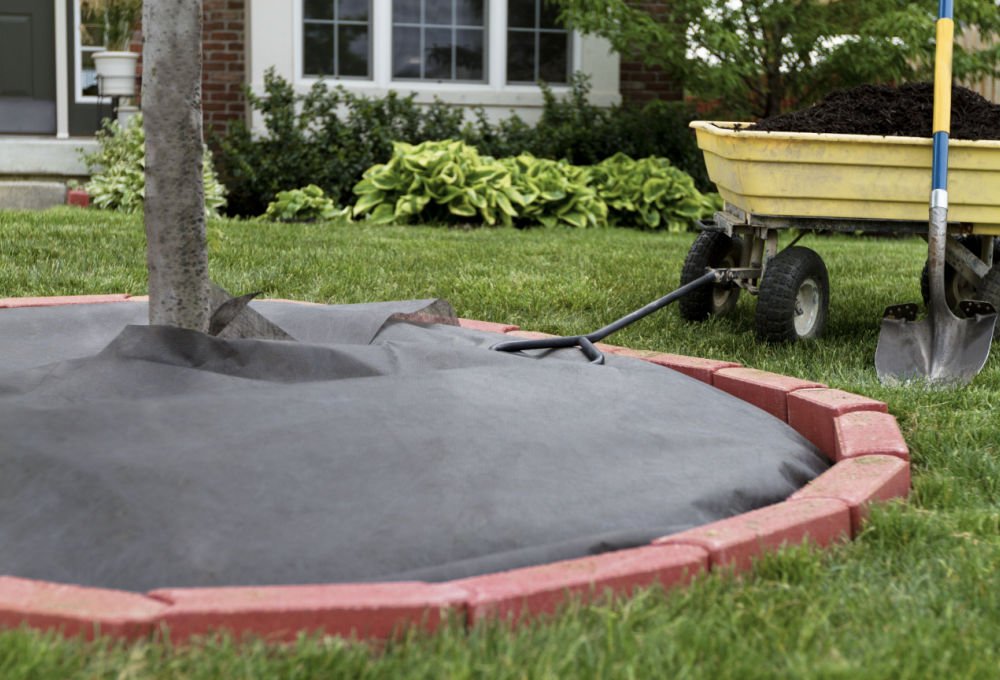
So, what exactly is landscape fabric? Picture a sturdy, breathable material that acts as a weed barrier, preventing weeds from reaching the surface, yet allowing water and air to penetrate, ensuring your flowers continue to thrive. Sounds like magic, right? But hold onto your trowels – it gets even better!
First off, landscape fabric is a fantastic time saver. Say goodbye to back-breaking weed pulling sessions! Plus, it’s a long-term solution – unlike mulch, you don’t need to replace it every season. But the cherry on top? It helps to conserve soil moisture, ensuring your blooms are hydrated and happy.

Clear your bed: Before anything else, rid your flower bed of any existing weeds and smoothen the soil.
Roll out the fabric: Lay the landscape fabric over the bed, ensuring it covers the entire area.
Secure the fabric: Use garden staples or pins to secure the fabric, paying special attention to the edges.
Cut slits for your plants: Carefully cut X-shaped slits and gently place your plants into the openings.
Optional – Cover with mulch: While optional, a layer of mulch can give your flower bed a neat finish and extra protection.
First up is non-woven landscape fabric, the best landscape fabric for weed control. Made by bonding or felting fibers together, this fabric provides a solid barrier against those pesky weeds.
But it’s not all about brute force! Non-woven landscape fabric is breathable, allowing water, air, and nutrients to seep through and nourish your lovely flowers. It’s a fantastic option for permanent landscapes and around established plants.
Next in line is woven landscape fabric. Picture two sets of parallel threads intricately woven together at right angles – a little like a mini rug for your garden. This design makes it exceptionally sturdy and tear-resistant, perfect for heavy-duty use.
It’s a dream in walkways or under decks, but think twice before using it around plants. Why? While it’s a champ at stopping weeds, its water and air permeability isn’t quite up to par with non-woven fabric. You wouldn’t want your blooms gasping for air or perennials thirsting for water, would you?
Finally, we come to the most eco friendly weed barrier – bio paper mulch. Made from recycled paper, this organic option breaks down over time, enriching the soil with nutrients.
Bio paper mulch is the new kid on the block and a favorite among organic gardeners. It’s breathable, lets water through, and, most importantly, it will prevent weeds. But keep in mind, it’s less durable than its synthetic counterparts and will need replacing more often.
Well, there you have it, folks! From knowing your enemy to choosing your weapons and strategizing your defense, you’re now ready to wage a successful war against weeds. But let’s not forget the golden rule of gardening – consistent care is the heart of it all. Show your garden some love and it’ll pay you back with beauty – and fewer weeds!
If you checked the “Digital Blueprint Only” box, then yes. If not, you will receive our actual Garden map, printed on our custom-made landscape fabric.
Whether you should start your garden with seeds or mature plants depends on several factors, including your gardening goals, experience level, budget, and patience. If you have the option, we recommend you start with mature plants for several reasons:
A digital blueprint is the layout in a .PDF format. If you are comfortable reading a scaled schematic and think you can handle the installation without the extra help, this option may be for you.
Garden Map is the design layout printed on our custom-made landscape fabric. Along with the printed fabric, you will receive installation instructions.
Stay in the loop with our exclusive gardening and landscaping design newsletter. Get the latest tips, trends, and inspiration delivered straight to your inbox. Subscribe today and grow with us!
A big thank you for subscribing to the PBN Design newsletter.
We're thrilled to have you join our community. Get ready for exciting updates, insightful content, and more delivered straight to your inbox.
Stay tuned!
Go backA big thank you for subscribing to the PBN Design newsletter.
We're thrilled to have you join our community. Get ready for exciting updates, insightful content, and more delivered straight to your inbox.
Stay tuned!
Go back